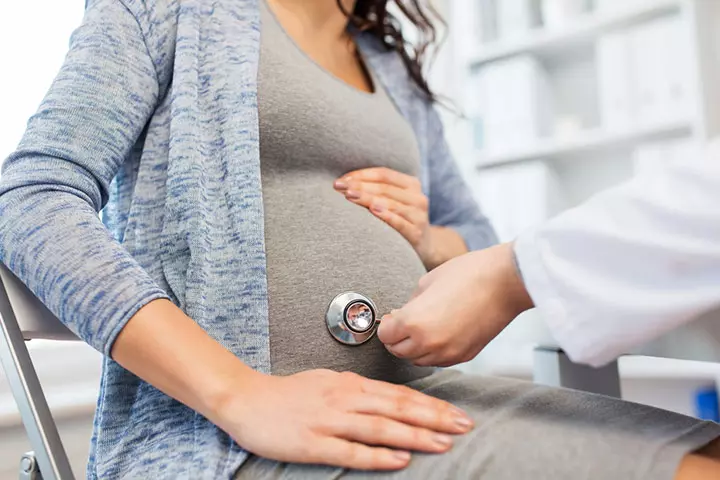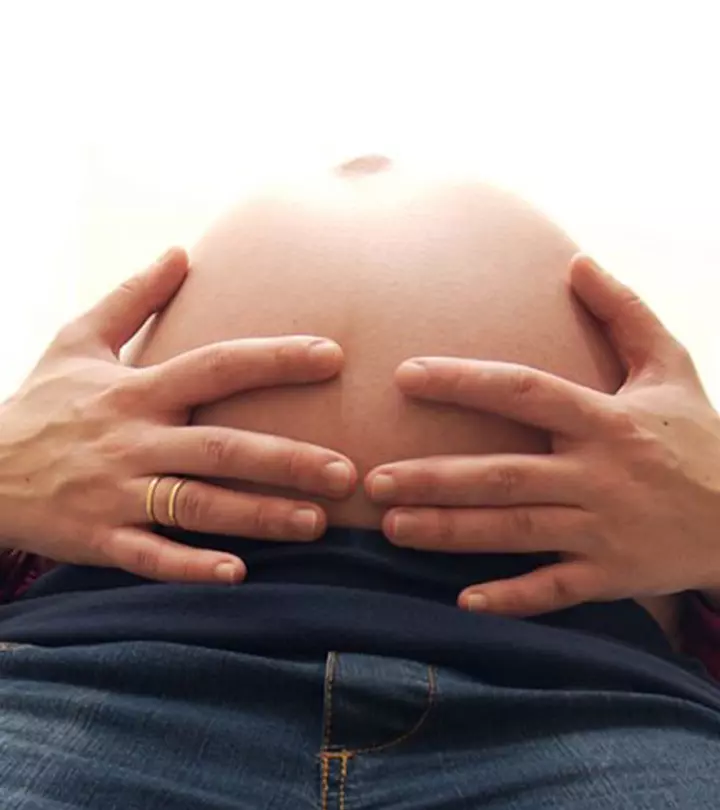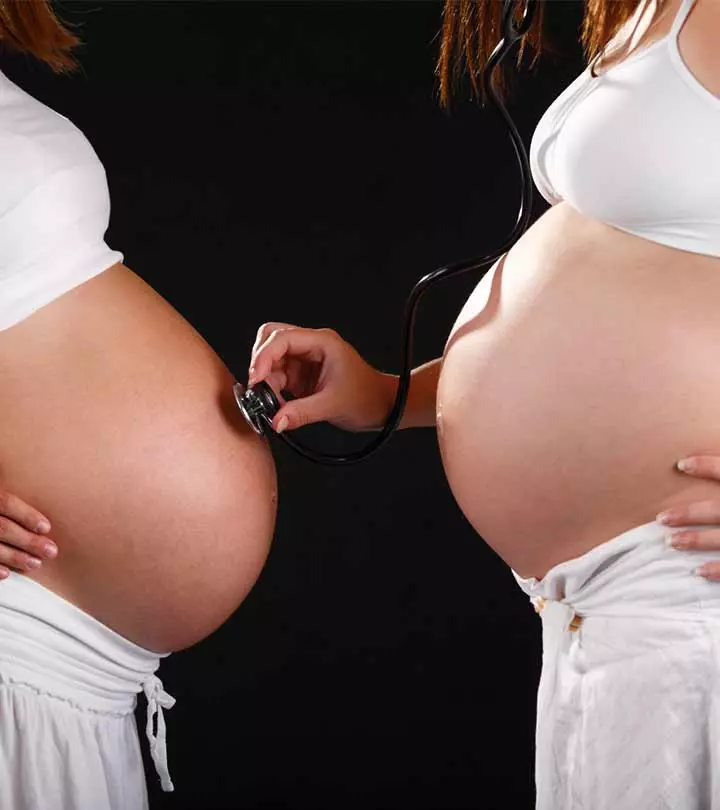

Image: Shutterstock

Pregnancy is a long and complex process. Anomalies in the reproductive organs can cause a variety of complications during pregnancy or childbirth. Abnormal uterus formation is one such complication that can cause issues for many women. Anomalies in the shape of the uterus are usually birth defects that remain undetected in many women. However, though harmless in some women, the effects can be more undesirable in others. The prevalence of uterine anomalies is around 0.5% in the general population, the highest being 39% for bicornuate (1). More often, women go through the entire gestation period with uterine complexities completely unaware and undiagnosed! Around 5% of women were diagnosed with uterine anomalies during a C-section (2).
A few common uterine anomalies in women are Septate and Bicornuate, and these could show up at any given stage of the Mullerian development process. The Mullerian development process sees the formation of the uterus, cervix, and other parts of the reproductive system in females. Mullerian duct anomalies are linked to reproductive issues like premature labor, rupture of membranes, and even miscarriages (3). Let’s get to know more about Bicornuate Uterus and how to treat this problem:
What Is A Bicornuate Uterus?
Image: IStock
A bicornuate uterus is one of the seven classes of Mullerian duct anomalies classified by the American Society of Reproductive Medicine in 1988 (4). A Bicornuate uterus is supposed to be heart-shaped with two horns. This malformation causes the uterus to get divided into two separate cavities (4). Here, the Mullerian ducts do not fuse into one cavity. It is a unique congenital condition where the uterus has two distinct spaces instead of a typical single space. What causes the uterus to be bicorn continues to remain a mystery.
The bicornuate uterine condition can be rectified using surgical procedures and is usually deemed harmless if diagnosed early on. Recurrent miscarriages and low baby birth weight are prominent pregnancy outcomes in women with a bicornuate uterus (5). But many women undergo a smooth pregnancy despite such complications as each woman experiences difficulties differently depending on her underlying health conditions. Here are a few more facts you need to know about the bicornuate uterus:
What Is The Angle Between The Horns Of A Bicornuate Uterus?
Image: IStock
The points where the uterus meets the fallopian tubes are referred to as the uterine horns, or simply horns. The uterine horns are also called the Cornua of the uterus and they provide attachment to the ligament of the ovaries. The angular distance between the two horns of a Bicornuate Uterus is usually above 105 degrees (6).
How Is A Bicornuate Uterus Diagnosed?
Image: IStock
3-D ultrasonography is usually the preferred method to diagnose a bicornuate uterine formation. It is reported to have the highest accuracy in diagnosing a bicornuate uterine anomaly (5). Magnetic Resonance Imaging (MRI) is also used to record anomalies (1). Another method sometimes employed in detecting Bicornuate Uterus is the Hysterosalpingogram (HSG) which has a lower accuracy compared to MRI and ultrasound methods.
As a general rule, an angle between the uterine horns of less than 75 degrees points to the septate uterus while an angle of more than 105 degrees can be related to the bicornuate uterus (7).
A precise diagnosis is usually the first step before planning the surgery if your doctor recommends it (5). Make sure that an experienced radiologist with knowledge of uterine anomalies conducts the diagnosis. Confirm your tests before concluding, as there could be chances of being misdiagnosed.
How Does The Bicornuate Uterus Condition Affect Your Baby?
Image: IStock
As the uterus has a smaller space, the baby has less room to move and grow. This may lead to fetal growth retardation and malposition (7). The risk of having a baby with congenital disabilities is higher in a woman in a bicornuate uterus than one in a normal uterus (8). This can translate to developing higher risks for having a preterm birth of the child as well as higher chances of miscarriage.
What Does A Bicornuate Uterus Mean For You?
Image: Shutterstock
A few complications have been identified in women suffering from this condition. A bicornuate uterus is a uterine malformation in which a woman has a heart-shaped womb. In some cases, this causes adverse obstetric outcomes and complications during delivery (9). A female genital malformation such as a bicornuate uterus can thus, affect your reproductive ability and cause a miscarriage.
In rare cases, a bicornuate uterus condition can cause recurrent abortions (10). In other instances, the highest incidence of preterm labor is found in women with a bicornuate uterus formation (11).
How Is A Bicornuate Uterus Treated?
Image: Shutterstock
Medicines do not help a bicornuate uterine anomaly. Unless a woman wishes to have babies, such a malformation does not impact her lifestyle or pose a health risk. Reconstructive surgery is the most common method of treating a bicornuate uterus (12).
The earlier the issue of bicornuate uterus is detected the better and easier it is to take care of it. Opting for reconstruction surgery before becoming pregnant is usually the ideal way to deal with it. In case of late diagnosis of bicornuate uterus, towards the end of pregnancy, it would be advisable to opt for a C-section delivery (13). As the condition isn’t something that can be fixed with medicine, going for normal delivery might give rise to additional complications on the day of childbirth. So, have a consultation with your obstetrician well in advance in planning the C-section when dealing with a bicornuate uterus.
How Is The Reconstruction Of A Bicornuate Uterus Done?
Image: Shutterstock
Resectoscope metroplasty can help overcome such cervical anomalies and help reduce the chances of spontaneous abortions. Hysteroscopic and abdominal metroplasty have been used to improve the survival rate of babies in a bicornuate uterus. These procedures are minimally invasive. While this does not promise a better fertility rate in women diagnosed with the bicornuate uterus, it has shown promising results in lowering the cesarean section rate and improving live birth rates.
Before you decide to get pregnant, ensure that your uterus is healthy. If you are trying to get pregnant and start a family, getting yourself checked to experience a healthy pregnancy without complications is crucial. Take all precautionary measures to save yourself the stress and experience a pain-free pregnancy. Did you know about uterine malformations that affect your pregnancy? Please share your stories with us in the comments section below!
References
- MR Imaging Diagnosis of Uterovaginal Anomalies: Current State of the Art
https://pubs.rsna.org/doi/full/10.1148/rg.e13 - Frequency And Types Of Uterine Anomalies During Cesarean Section
https://pubmed.ncbi.nlm.nih.gov/30372654/ - Successful Delivery Of Twin Pregnancy In A Bicornuate Uterus (Uterus Bicornis Unicollis) By Bilateral Caesarean Section
https://pubmed.ncbi.nlm.nih.gov/21352633/ - Bicornuate Uterus
https://pubmed.ncbi.nlm.nih.gov/32809694/ - 5. Septate Or Bicornuate Uterus: Accuracy Of Three-dimensional Trans-vaginal Ultrasonography And Pelvic Magnetic Resonance Imaging
https://www.sciencedirect.com/science/article/pii/S0378603X14000631#b0010 - Bicornuate Uterus
https://radiopaedia.org/articles/bicornuate-uterus - Müllerian Duct Anomalies: From Diagnosis To Intervention
https://www.ncbi.nlm.nih.gov/pmc/articles/PMC3473390/ - Epidemiological Aspects Of Children Of Women With Bicornuate Uterus
https://pubmed.ncbi.nlm.nih.gov/9577024/ - Live Term Pregnancy In One Horn Of A Bicornuate Uterus
https://pubmed.ncbi.nlm.nih.gov/22288329/ - A Case of Recurrent Pregnancy Loss due to Bicornuate Uterus
http://www.djcm.jssuni.edu.in/2025/05/01/a-case-of-recurrent-pregnancy-loss-due-to-bicornuate-uterus/ - Uterine Anomalies And Pregnancy Outcome Following Resectoscope Metroplasty
https://www.sciencedirect.com/science/article/abs/pii/S0020729207002500 - Treatment Of Congenital Malformations
https://pubmed.ncbi.nlm.nih.gov/21437824/ - Uterine Abnormality – Problems With The Womb
https://www.tommys.org/pregnancy-information/pregnancy-complications/uterine-abnormality-problems-womb
Community Experiences
Join the conversation and become a part of our nurturing community! Share your stories, experiences, and insights to connect with fellow parents.



















